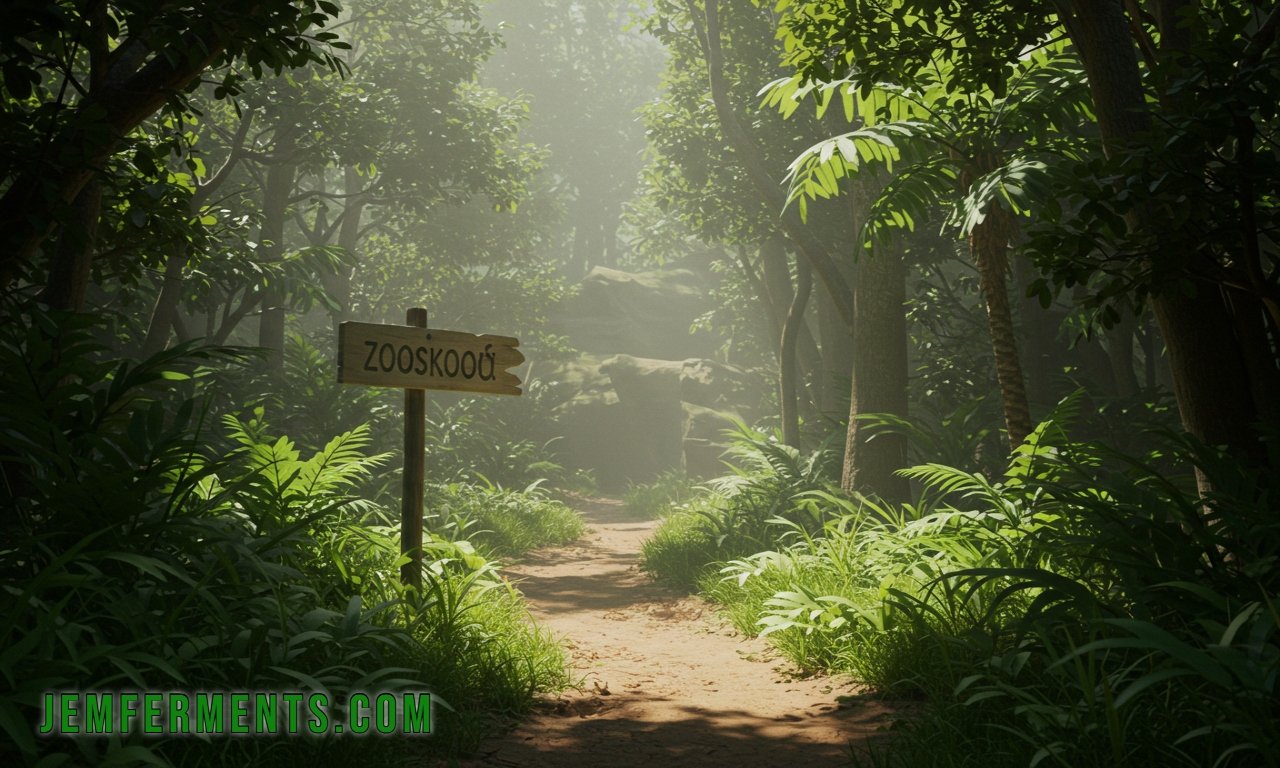Welcome to the enchanting world of Zooskooñ, a hidden gem that captivates both nature lovers and curious minds alike. This extraordinary species is not just another entry in the animal kingdom; it’s a marvel waiting to be explored. From its unique characteristics to its intriguing backstory, Zooskooñ invites you on an adventure filled with discovery. Whether you’re passionate about wildlife or simply looking for something new, prepare to uncover the secrets behind this fascinating creature and learn why it deserves a spotlight in our natural world. Let’s dive into what makes Zooskooñ truly remarkable!
Zooskooñ stands out in the animal kingdom for its vibrant colors and unique patterns. This elusive creature often goes unnoticed, hiding among dense foliage and thriving in specific ecosystems. Its captivating presence adds a splash of wonder to biodiversity.
You Might Also Like: Sinpcity
Many enthusiasts are drawn to Zooskooñ not only for its beauty but also for its fascinating behaviors. Observing these animals in their natural habitat reveals intricate social dynamics that challenge our understanding of wildlife interactions. Each encounter leaves an unforgettable impression on those lucky enough to witness it firsthand.
Introduction
Welcome to the enchanting world of zooskooñ, a hidden gem that captivates nature lovers and botanists alike. This remarkable species offers fascinating insights into both the plant kingdom and its ecological significance.
Discovering zooskooñ invites you to explore its rich history, unique characteristics, and vibrant habitats. As we delve deeper into this extraordinary specimen, you’ll find that it is much more than just an unusual name—it’s a testament to nature’s diversity and resilience.
Botanical Classification and Origins
Zooskooñ belongs to the family of Arecaceae, commonly known as palm trees. This tropical wonder thrives in warm climates, showcasing its unique characteristics among various plant species. Its scientific name reflects its exotic nature and distinct features.
Originally discovered in the lush rainforests of Central America, zooskooñ has captivated botanists for centuries. Its origins are steeped in mystery and folklore, adding an enchanting charm to this remarkable plant. As it flourishes across different environments, the allure of zooskooñ continues to grow worldwide.
Physical Characteristics
Zooskooñ boasts a striking appearance that captivates all who encounter it. Its vibrant colors range from deep greens to bright yellows, making it stand out in any environment. The unique patterns on its skin can be mesmerizing, resembling an intricate tapestry woven by nature itself.
This remarkable species typically features a sturdy build with elongated limbs and expressive eyes that convey keen intelligence. Its distinctive tail is not just for balance; it also plays a crucial role in communication within its social groups.
Natural Habitat and Distribution
Zooskooñ thrives in diverse environments, often found in tropical forests and subtropical regions. Its adaptability allows it to flourish in varying altitudes, from lowland rainforests to mountainous areas. This flexibility helps the species establish a significant presence across its native range.
The distribution of zooskooñ spans several continents, including parts of Asia and Africa. As this unique plant thrives in rich soils near water sources, it plays an essential role in maintaining local ecosystems while supporting various wildlife populations that depend on its habitat for survival.
Cultivation Requirements
Zooskooñ thrives in well-draining soil with a slightly acidic to neutral pH. It prefers partial shade but can tolerate full sun if adequately watered. Regular feeding with a balanced fertilizer promotes healthy growth and vibrant blooms.
Watering is crucial, especially during the growing season. Ensure the soil remains moist but not soggy to prevent root rot. Utilize mulch around the base to retain moisture and suppress weeds, creating an ideal environment for this unique plant to flourish beautifully.
Comparison with Similar Species
Zooskooñ stands out among its relatives due to its unique adaptations and vibrant coloration. Similar species, like the exotic zookli or the common zoozala, share some traits but differ significantly in habitat preferences and growth patterns.
While zookli thrives in humid environments, zooskooñ prefers drier climates, showcasing a remarkable resilience. The zoozala might be more widely recognized for its size, yet it lacks the captivating features that make zooskooñ such a hidden gem of the animal kingdom.
Cultural Significance and Historical Use
Throughout history, zooskooñ has held a special place in various cultures. Indigenous communities often revered it for its unique characteristics and vibrant aesthetics. It was frequently incorporated into their traditions, symbolizing resilience and harmony with nature.
Additionally, ancient civilizations utilized zooskooñ in rituals and ceremonies, celebrating the cycles of life. Its presence in folklore adds to its mystique, making it not just a plant but a part of cultural identity across generations. The stories surrounding this remarkable species continue to inspire awe today.
Medicinal Properties and Research
Zooskooñ has garnered attention for its potential medicinal properties, particularly in traditional practices. Indigenous communities have long utilized parts of the plant to treat various ailments, from digestive issues to skin conditions. Studies are beginning to explore these claims scientifically.
Preliminary research suggests that certain compounds found in zooskooñ may possess anti-inflammatory and antioxidant effects. As scientists delve deeper into its chemical composition, there’s hope for discovering new therapies derived from this remarkable species. The intersection of tradition and modern science could unlock exciting possibilities.
Conservation Status
The conservation status of zooskooñ is a topic that has garnered attention in recent years. As habitats continue to face threats from urbanization and climate change, the need for protective measures becomes crucial.
Current assessments indicate that its population is declining due to habitat loss and poaching. Conservationists are working tirelessly to implement strategies aimed at preserving this unique species for future generations while raising awareness about its ecological importance.
Environmental Regulation
Environmental regulations play a crucial role in protecting zooskooñ and its habitat. These laws are designed to minimize human impact on ecosystems where this unique species thrives. By enforcing sustainable practices, we can preserve the delicate balance of nature.
Compliance with these regulations ensures that conservation efforts remain effective. It promotes responsible land use and protects biodiversity, thereby allowing zooskooñ populations to flourish. In turn, healthy environments contribute to the overall resilience of wildlife habitats around the globe.
Maintaining Your Setting
Creating the ideal environment for zooskooñ is crucial for its growth. Start with a well-draining soil mix that retains moisture but avoids waterlogging. Regularly check your plant’s surroundings, ensuring it receives adequate light without being exposed to harsh sunlight.
Humidity plays a vital role in maintaining vibrancy. If you’re growing indoors, consider using a humidifier or placing a tray of water nearby. This will help mimic the natural conditions zooskooñ thrives in, promoting healthy foliage and flowering throughout its cycle.
Management of Flowering Cycle
Managing the flowering cycle of zooskooñ requires keen observation and timing. Understanding its natural blooming period is crucial. This plant typically flowers during specific seasons, influenced by environmental conditions like light and temperature.
To encourage abundant blooms, ensure proper care throughout the year. Adjusting watering schedules and nutrient distribution can significantly impact flower production. Regular pruning also helps stimulate growth while removing any dead or damaged parts allows energy to focus on healthy blossoms instead.
Methods of Propagation
Propagation of zooskooñ can be achieved through various methods to ensure robust growth. One popular technique is seed propagation, where fresh seeds are collected and sown in well-draining soil. This method allows for genetic diversity, promoting resilience.
Another effective approach is vegetative propagation using cuttings. Taking healthy stem cuttings during the growing season encourages root formation when placed in a suitable medium. Both methods have their benefits and can lead to thriving plants when executed with care and attention to detail.
Care During Dormancy
During dormancy, zooskooñ requires special attention to ensure it thrives when the growing season returns. Reduce watering significantly, allowing the soil to dry out between intervals. This mimics natural conditions and prevents root rot.
Keep your plant in a cool, dark location where temperatures remain consistent. Avoid fertilizing during this phase; instead, focus on maintaining stable humidity levels. With proper care during dormancy, your zooskooñ will emerge strong and vibrant when spring arrives, ready to flourish once again.
Troubleshooting
When caring for zooskooñ, you might encounter a few challenges. Yellowing leaves could indicate overwatering or poor drainage. Check the soil moisture regularly to avoid root rot.
Pests can also be an issue. Aphids and spider mites may invade your plant, leading to stress. A gentle spray of water can help dislodge them, while insecticidal soap offers a stronger defense if necessary. Stay vigilant and act quickly to keep your zooskooñ thriving in its environment.
Frequently Asked Questions
Are you curious about zooskooñ?
You’re not alone. Many people are eager to learn more about this fascinating species. Here are some answers to the most common questions.
What is zooskooñ?
It’s a lesser-known plant with unique characteristics that make it stand out among its peers.
Where can I find zooskooñ in the wild?
It thrives in specific regions, often found in climates that suit its growth needs.
How do I grow my own zooskooñ?
Start by following proper cultivation requirements and ensuring optimal conditions for healthy development.
Can zooskooñ be used for medicinal purposes?
Yes, research has shown potential health benefits, although further studies are ongoing to fully understand them.
What should I do if my zooskooñ isn’t growing well?
Troubleshooting can help identify issues—adjusting light or water may bring it back on track!
Is there any conservation effort for this species?
Awareness and preservation efforts are crucial as habitat loss poses significant threats.
Now you’re ready to explore the world of zooskooñ! Whether you’re interested in gardening or simply love learning about nature’s wonders, this hidden gem holds plenty of surprises. Happy discovering!

